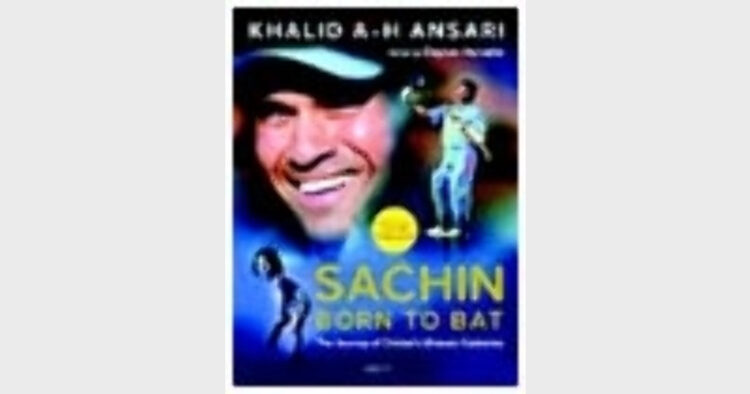 Manju Gupta
Manju Gupta
Sachin: Born to Bat: The Journey of Cricket’s Ultimate Centurion, Khalid AH Ansari, Jaico Publishing House, Pp 200, Rs 450.00
PADMA Shri author and veteran journalist, Khalid Ansari, says about his book, “This is an attempt to impartially probe the crucial mental, physical and emotional ingredients of a cricketing ‘god’. I have tried to turn the laser on the maestro’s persona – innumerable blemishes and all – to present the book from degenerating into a shabaash, wah-wah hagiography. Sachin has also shown that he is a mere mortal with feet of clay – witness his run-ins with authorities, cricketing and civil.”
Khalid Ansari probes the crucial mental, physical and emotional ingredients of this cricketing ‘god’, an all-time great sportsman, a legend in his lifetime, an extraordinary role model and an exemplary and sensitive human being.
Sachin took up cricket about the age of 13 on his brother’s insistence and was tutored by Ramakant Achrekar, the coach at his Shardashram School in Mumbai. Sachin represented his school in the Giles (under -15) tourney and in the final round against Don Bosco School, he scored two half centuries and also captured a wicket. Following his good show, he was selected for the Bombay and West Zone team to participate in the Vijay Merchant Trophy. Since then, he has never looked back but has grown from strength to strength.
The square cut and the off-drive are his favourite shots while Vivian Richards and Sunil Gavaskar are his favourite batsmen. Sachin does not miss an opportunity to see them in action, either on video or in the cricketing arena. He loves to play one-day cricket more than a four-day match. His natural instincts are to attack from the word ‘go’. He devotes so much time to cricket that he has no time for any other game, though he loves to watch tennis. In the few free hours that he gets, he listens to Western music. Why Western music, when his father was a poet? Most of his friends are from Bombay Scottish School and as he lives in Sivaji Park, they all love Western songs. Sachin is also a good singer.
Milind Rege, a cricketer who played an important role in Sachin’s development when he was a boy of 15, says that Sachin “is absolutely comfortable in big company. There are many players in the present team who are still not at ease while playing this level of cricket.”
Sharad Ugra says that the 16-year old Sachin had “always been temperamentally bold. He knows the strength of the opponent he’s facing.”
Harsha Bhogle, writing on India’s 1990 tour of England, praises Sachin for scoring his maiden Test hundred at Old Trafford.
Ayaz Memon, writing of India’s 1991-92 Test series against Australia, says, “Tendulkar reiterated his enormous batting talent to score his third Test hundred and rescue India from an utterly precarious situation of the final Test at Perth.”
Sourav Ganguly says about Sachin, “The whole world knows about his ability but what amazes me most is his hunger and desire to succeed every time he walks out to play for India.”
Commentator Ian Chappell says, “Tendulkar has handled his fame with great equanimity and on the odd occasion when his mind has wavered on the field, he’s quickly been able to re-focus with dramatic effect.”
Khalid Ansari concludes by saying that Sachin, for all his splendiferous achievements, remains conspicuously self-effacing, exceptionally deferential towards opponents, inordinately understated in his demeanour and unfailingly respectful towards elders.
About cricket, Tendulkar himself has to say this: “I’m vividly in love with the sport. At this stage, I enjoy every little moment. I know my body is different from what it was 20 years ago. But possibly what a 17-year old mind could not do, a 37-year old mind can do, so somehow it balances out.”
A very racy style of writing this book has.
(Jaico Publishing House, A-2, Jash Chambers, 7-A, Sir Pherozshah Mehta Road, Fort, Mumbai-400 001; www.jaicobooks.com)














Comments